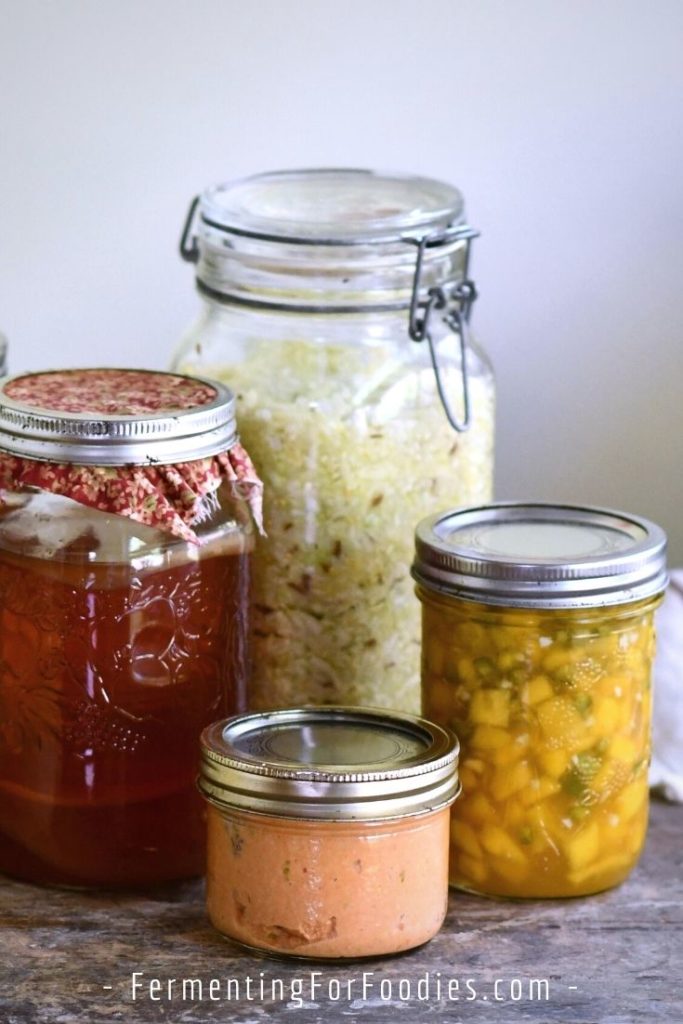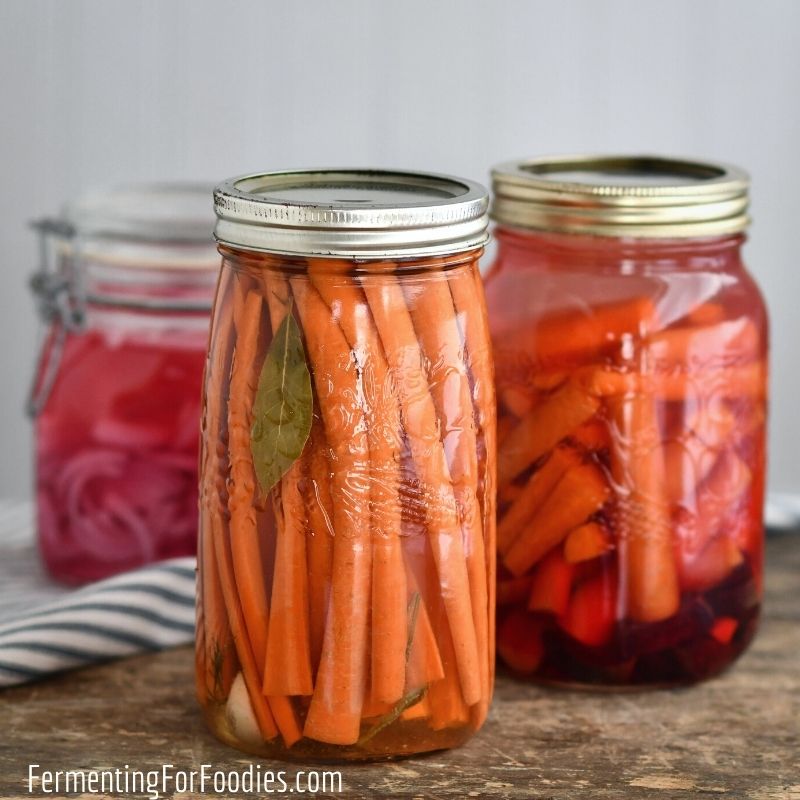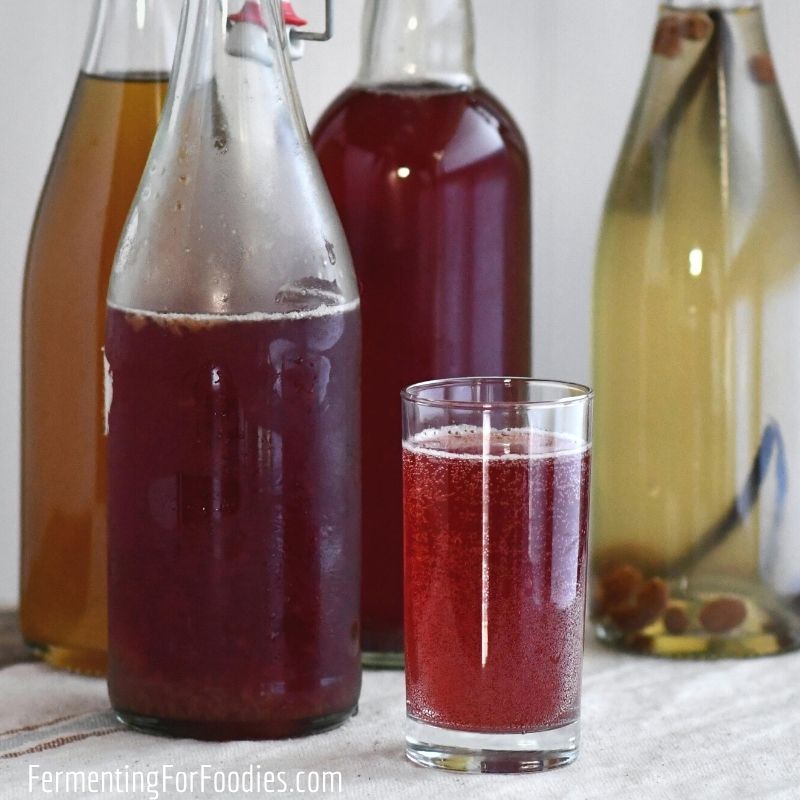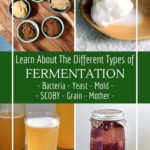Whether you are using yeast, bacteria, or mold, fermentation is healthy, delicious, and fun! Here are 12 types of fermented food cultures along with links to simple recipes that you can try at home.
How many different fermentation cultures have you tried?

Yeast
Yeast breaks down sugars into alcohol and carbon dioxide. The CO2 is what makes beer bubbly and causes bread to rise.
While yeast is part of a number of symbiotic cultures, only alcoholic ferments and yeast-risen bread are made from yeast alone.
Here are the two main types of yeast-based ferments:
- Beer, wine, cider, and other alcoholic ferments were traditionally made with wild yeasts. Nowadays home brewers use specific strains of yeast that are optimized for vigor and flavor.
- Instant yeast or fresh yeast is used to make quick and easy yeasted bread.
Bacterial Cultures
Bacteria are what most people think of when they think about fermented foods. Bacterial cultures convert sugars into acids. And bacterial fermentation is why both sauerkraut and yogurt taste sour!
There are a lot of different strains of bacterial cultures, however, the two main types of bacterial cultures are lactic bacteria and acetic acid bacteria (which is below, under symbiotic cultures).
Here are two types of lactic bacterial cultures.
- Most types of fermented dairy use a lactic culture. This includes yogurt, sour cream, buttermilk, and cheese.
- Most vegetables come in from the garden with lactic bacterial culture on their skin. It’s why it is so easy to make sauerkraut, kimchi, and other fermented vegetables.

Symbiotic Cultures
Many types of fermentation start with a symbiotic culture of yeast and bacteria. These cultures convert sugar into acids, alcohol, and CO2.
Here are 6 popular symbiotic cultures:
- Sourdough bread is made from a free-range culture of yeast and bacteria. It is easily caught by leaving a mixture of flour and water out on your counter for a few days.
- Kombucha SCOBYs thrive on brewed black tea and sugar. The sealed bottled beverages in your grocery store are nothing like truly fermented kombucha tea. Homemade kombucha is sweet and sour, sparkling, and probiotic!
- Jun is similar to kombucha, however, a Jun SCOBY lives on green tea and honey.
- Water kefir grains eat sucrose and molasses. The result is a sparkling probiotic beverage, that is more soda-pop-like than kombucha.
- Milk kefir is made with kefir grains. It turns milk into a thick, sour, and lightly sparkling beverage. Again, homemade kefir is not the same as store-bought kefir, which usually contains just bacterial cultures.
- Real apple cider vinegar is made from a mother that is a symbiotic culture of acetic acid bacteria and yeast. It’s easy to get an ACV mother by buying vinegar labeled as “raw” or “with mother”.

Mold
There are a few different types of ferments that rely on mold to break down sugar and proteins. While most home-fermenters aren’t about to make blue cheese or mold cured sausages, here are two mold ferments that I recommend trying.
- Koji kin is a mold that ferments on rice or barley. It is the culture that is at the heart of MANY Japanese ferments including sake and miso.
- Tempeh is an Indonesian mold culture that ferments soybeans into a mushroom-flavored cake. It can also ferment other beans and seeds.

Hello! Thank you for this site! Do you think it’s possible to ferment store bought pasta? I rather make bread than start pasta from scratch 🙂
Sourdough pasta is something that needs to be made with sourdough starter. It’s just like regular pasta, but with a sourdough ferment of the dough first. I’ve actually never made it either! 🙂 However, I do add probiotics to my pasta sauce by using cultured cream or vegetables. Cheers.